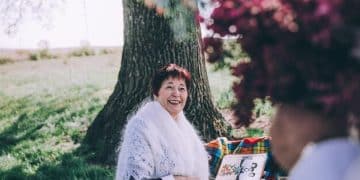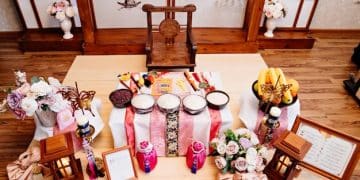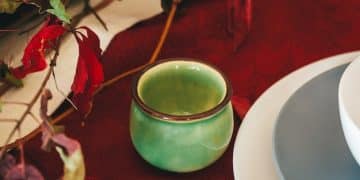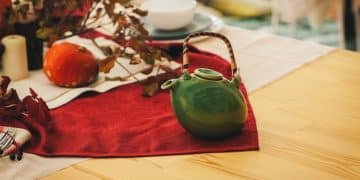Understanding Korean Wedding Traditions: A 2025 Guide for US Guests
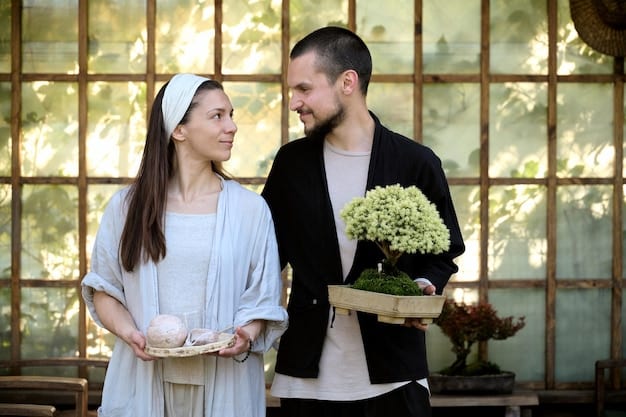
Understanding Korean wedding traditions in 2025 is essential for US guests to navigate the ceremony respectfully, embracing customs like the *paebaek* and understanding the significance of gifts and attire, ensuring a memorable and culturally sensitive experience.
Attending a Korean wedding in 2025 as a guest from the US? Understanding Korean wedding traditions: A guide for US guests in 2025 will help you navigate the customs and ensure a respectful and enjoyable experience. Get ready to immerse yourself in beautiful ceremonies and meaningful celebrations!
A Deep Dive into Korean Wedding Heritage
Korean weddings are a vibrant blend of ancient traditions and modern customs. As a US guest, understanding the historical context behind these practices will enhance your appreciation and participation in the ceremony.
Historical Significance of Korean Weddings
Historically, Korean weddings were more than just a union of two individuals; they represented the merging of two families. The rituals and ceremonies were meticulously planned to ensure prosperity and harmony for the couple and their extended families.
Key Elements Rooted in History
Many of the elements seen in modern Korean weddings, such as the exchange of gifts and the bowing ceremony, have deep roots in Korean history and Confucian values. These customs emphasize respect, family unity, and the promise of a prosperous future.
- 폐백 (Paebaek): A ceremony where the bride and groom pay respects to the groom’s family.
- 함 (Ham): The gifting ceremony where the groom’s friends deliver gifts to the bride’s family.
- 사주 (Saju): The sharing of birthdates to determine compatibility.
By understanding the historical underpinnings of these traditions, US guests can approach the wedding with a deeper sense of respect and engagement.
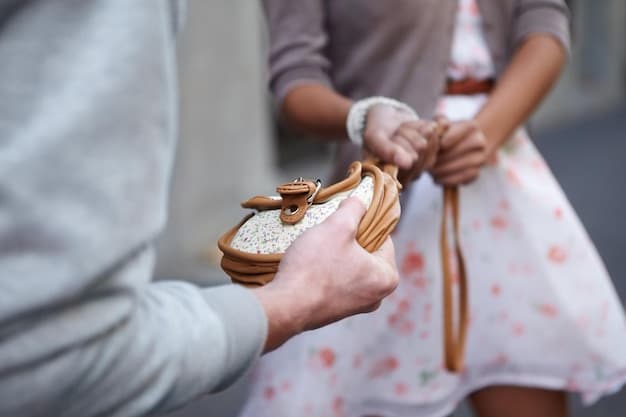
Pre-Wedding Customs a US Guest Should Know
Before the big day, several pre-wedding customs set the stage for the marital union. Knowing these customs can help US guests understand the significance of the events leading up to the main ceremony.
The Importance of the Saju
Traditionally, the families of the bride and groom exchange birthdates, known as “Saju,” to consult with a fortune teller. This consultation helps determine the couple’s compatibility and the auspicious date for the wedding.
함 (Ham) Delivery
The delivery of the “Ham,” a box filled with gifts from the groom’s family to the bride’s family, is a lively and symbolic event. The groom’s friends carry the Ham, often playfully announcing their arrival, and the gifts inside signify good wishes for the couple’s future.
- Gifts in the Ham: Typically include jewelry, silk fabrics, and other valuable items.
- The Ham Carrier: Usually a married man with a happy and successful marriage.
- Welcoming the Ham: The bride’s family welcomes the Ham with food and drinks.
Being aware of these pre-wedding customs provides US guests with context for the celebrations and rituals that follow.
Dressing the Part: Korean Wedding Attire for Guests
Choosing the right attire is crucial for showing respect and fitting in at a Korean wedding. For US guests, understanding the cultural nuances of wedding attire will ensure you make a good impression.
General Guidelines for US Guests Attire
As a general rule, US guests should dress modestly and respectfully. Avoid wearing overly flashy or revealing outfits. Opt for formal attire that is both comfortable and appropriate for the occasion.
Colors to Consider and Avoid
While black is generally acceptable, it’s best to avoid wearing all black, as it is often associated with mourning. Bright and cheerful colors are preferred. However, avoid wearing white, as it is traditionally reserved for the bride.
- Acceptable Colors: Pinks, blues, greens, and other pastel shades.
- Colors to Avoid: All-black ensembles and white.
- Appropriate Fabrics: Silk, chiffon, and other formal fabrics.
By adhering to these guidelines, US guests can show their respect for Korean wedding traditions and avoid any unintentional faux pas.
Navigating the Wedding Ceremony
The wedding ceremony itself is a beautiful and intricate affair. Understanding the sequence of events and the significance of each ritual will help US guests fully appreciate and participate in the celebration.
The Traditional Wedding Rituals
Korean wedding ceremonies often include traditional rituals such as the bowing ceremony, where the bride and groom bow to their parents, and the exchange of wedding vows. These rituals symbolize respect, commitment, and the joining of two families.
Modern Adaptations to Traditional Ceremonies
While many couples incorporate traditional elements, modern Korean weddings often blend these with Western-style ceremonies, including exchanging rings and reciting vows in English. This fusion creates a unique and meaningful experience.
- 주례 (Jurye): The officiant who guides the ceremony.
- 맞절 (Matjeol): The bowing ceremony between the bride and groom.
- 성혼선언문 (Seonghonsunseonmun): The declaration of marriage.
Being familiar with these elements allows US guests to follow along and engage with the ceremony on a deeper level.

Post-Wedding Celebrations: The Paebaek Ceremony
The Paebaek ceremony is a post-wedding tradition that is particularly significant. This ceremony involves the bride and groom paying respects to the groom’s family and receiving blessings.
Understanding the Paebaek Ceremony
During the Paebaek ceremony, the bride and groom offer gifts of jujubes (dried Korean dates) and chestnuts to the groom’s parents, who in turn offer words of wisdom and blessings. This ceremony symbolizes the couple’s commitment to their new family and their hopes for a prosperous future.
How US Guests Can Participate
While the Paebaek is primarily a family affair, US guests can show their support by observing the ceremony quietly and respectfully. Offering congratulations to the family afterward is also a thoughtful gesture.
- Jujubes and Chestnuts: Symbolize children and prosperity.
- Tea Ceremony: The bride serves tea to the groom’s parents.
- Blessings: The groom’s parents offer words of wisdom and good wishes.
Understanding the nuances of the Paebaek ceremony can provide US guests with a deeper connection to Korean wedding traditions.
Gift-Giving Etiquette for US Guests
Giving a thoughtful and appropriate gift is a key part of Korean wedding etiquette. US guests should consider the cultural norms when selecting a gift for the happy couple.
Selecting the Perfect Wedding Gift
Traditionally, practical gifts such as household items or money are common. Monetary gifts are typically given in crisp, new bills placed in a white envelope with the giver’s name on it.
Presentation and Etiquette
When giving a gift, present it with both hands as a sign of respect. It’s also customary to offer a small bow while presenting the gift.
- Common Gift Ideas: Cash, household appliances, or gift cards.
- Presentation: Wrap the gift neatly and present it with both hands.
- Thank You Notes: Sending a thank you note after the wedding is a thoughtful gesture.
By following these gift-giving guidelines, US guests can show their appreciation and good wishes to the newlyweds in a culturally appropriate manner.
Essential Phrases for US Guests
Learning a few basic Korean phrases can go a long way in showing respect and making a positive impression at the wedding. US guests can enhance their experience by knowing some key expressions.
Must-Know Korean Phrases
Simple phrases like “Annyeonghaseyo” (hello), “Gamsahamnida” (thank you), and “Chukahamnida” (congratulations) can help you navigate social interactions and express your appreciation.
Pronunciation Tips
Take some time to practice the pronunciation of these phrases before the wedding. Even a small effort to speak Korean will be greatly appreciated by the hosts and other guests.
- 안녕하세요 (Annyeonghaseyo): Hello
- 감사합니다 (Gamsahamnida): Thank you
- 축하합니다 (Chukahamnida): Congratulations
Equipping yourself with these essential phrases will make your experience more enjoyable and meaningful.
| Key Point | Brief Description |
|---|---|
| 🎎 Traditional Attire | Guests should dress modestly, avoiding white or black. |
| 🎁 Gift Giving | Cash gifts in white envelopes are common, presented with both hands. |
| 🙇 Bowing Ceremony | Respectfully observe the couple bowing to their parents. |
| 🗣️ Basic Phrases | Learn and use phrases like “Annyeonghaseyo” and “Gamsahamnida”. |
Frequently Asked Questions
▼
Opt for formal attire, avoiding white (reserved for the bride) and all-black outfits. Choose modest and respectful clothing in cheerful colors like pink, blue, or green.
▼
Yes, gifts are customary. Cash gifts in a white envelope are typical. Present the gift with both hands as a sign of respect and offer a slight bow.
▼
The Paebaek is a post-wedding ceremony where the bride and groom pay respects to the groom’s family, receiving blessings and words of wisdom for their future.
▼
Yes, avoid wearing white, as it is reserved for the bride. Also, it’s best to steer clear of wearing all-black outfits, as they are typically associated with mourning.
▼
Learning a few basic Korean phrases like “Annyeonghaseyo” (hello) and “Gamsahamnida” (thank you) can enhance your experience and show respect to the hosts.
Conclusion
By understanding Korean wedding traditions: A guide for US guests in 2025, you will be well-prepared to attend and enjoy the celebration. Embracing the customs, dressing appropriately, and showing respect for the traditions will ensure a memorable and culturally enriching experience for everyone involved.


